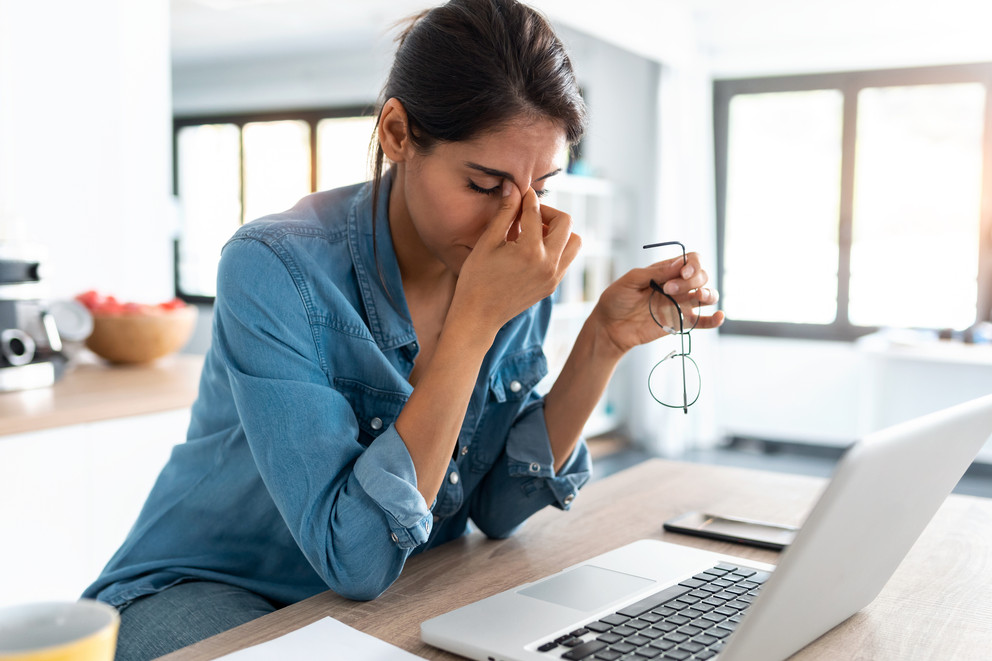
As employees and students of Penn State face the uncertain circumstances of the pandemic, University faculty offer advice on how to avoid burnout or, if you are already feeling sapped of energy and interest -- how to recover.
According to the World Health Organization, burnout is an occupational phenomenon resulting from chronic workplace stress that has not been successfully managed. It is characterized by three dimensions:
- feelings of energy depletion or exhaustion;
- increased mental distance from one’s job, or feelings of negativism or cynicism related to one's job; and
- reduced professional efficacy.
“Our bodies were not designed to stay in a constant state of stress and anxiety,” Alicia Grandey, professor of psychology, said of how the pandemic is impacting people. “Our bodies have a way of mobilizing to respond to a threat in the environment, called 'fight or flight,' and during the pandemic we have been in a sustained state of stress arousal. We are constantly vigilant of the virus, pushing for job productivity, trying to maintain our work-life balance and more. Our bodies are starting to wear out.”
Joshua Smyth, distinguished professor of biobehavioral health and associate director for the Social Science Research Institute, explained that the pandemic and working from home have affected individuals across a spectrum.
“It is clear that ‘on average,’ or overall, people are finding their work lives more challenging now,” Smyth said. “For example, some surveys have found that as many as 90% of respondents from across the world felt more challenges and difficulties from work, with more than half of respondents feeling ‘burned out’ often. Commonly, this seems to arise from additional burdens outside of work, such as caregiving, and the loss of clear work and home boundaries.”
However, there is hope: Faculty note that there are effective ways to recover from continual stress and burn out.
“Evidence shows that stepping away from work helps people be more productive and healthier in the long run,” Grandey said. “Taking a break isn’t lazy or selfish, it’s courageous.”
Actions to take
Grandey said that workers can use the DARE model: Detach, Acknowledge, Recover and Engage again.
To detach, Grandey said that employees should move away from the work environment for whatever amount of time they can allot, whether that is three, five or 15 minutes long. She noted that it is key to physically shift your eyes away from your computer screen or to take a break by entering another room.
Next, Grandey said it is time to acknowledge your state of mind. She explained that emotions are information and that it requires more energy to continuously avoid these signals.
“We can ignore, avoid, deny and push through how we feel for a short while, but that takes effort. That emotional information needs attention and by acknowledging how we feel we can move forward more effectively,” Grandey said.
Smyth explained that a key to avoiding complete burnout is to keep an eye on the early indicators of the condition to prevent it from becoming chronic. He noted that a few emotional indicators include feeling overwhelmed, having no control, self-blame and cynicism.
Once someone has come to terms with their emotions, regardless of which emotion it may be, Grandey said it is time to recover. She noted that recovery means two things: to rest and to replenish.
“There isn’t just one way of rest that works, it comes down to the power of choice and being in control of the situation,” Grandey said. “You can listen to music, take a walk or do whatever feels good for you.”
The second component of recovery entails replenishing your energy. Grandey said that this involves doing something that makes us feel good about ourselves, such as watching a funny video, calling a friend or writing a thank you letter.
The last, but not least, step of DARE is to engage again with work once you feel replenished.
Stephanie Stama, assistant director for community education and outreach at Counseling and Psychological Services, said that it is important to also keep yourself accountable for self-care.
“If you want to take a walk over the lunch hour, then tell a friend you'll call them while you're on the walk,” Stama said. “Also, inject novelty into your week. New things help you see different patterns, helping you be more effective across multiple roles in your life. They can be really small changes, such as taking a new route on your lunch walk, or trying a new flavor of coffee.”
Grandey noted that employees who feel that they would like to speak to someone have various resources at their disposal via the Employee Assistance Program. Employees may also visit the College of Medicine’s mental health tips and resources website.
“Try to nourish, or instill if they are not there, good work habits and boundaries,” Smyth said. “These give a sense of being able to step away, metaphorically, from your work, and help foster some sense of control; a sense of control over work and even life has been deeply challenged by the pandemic, and loss of control is a strong predictor of burnout.”